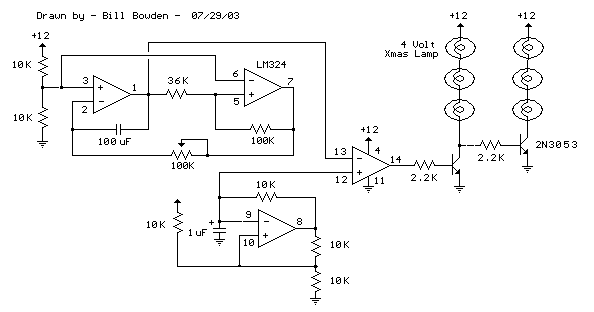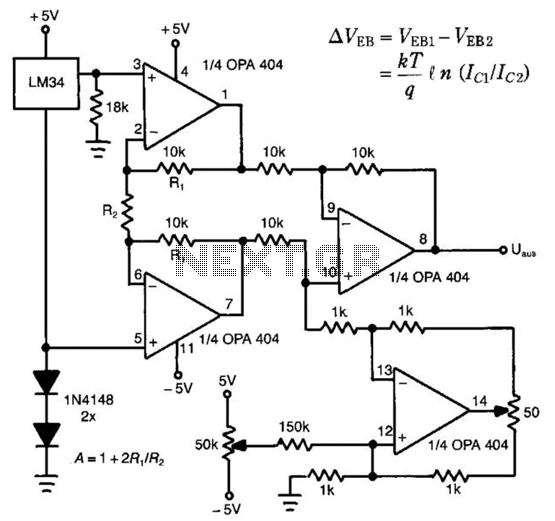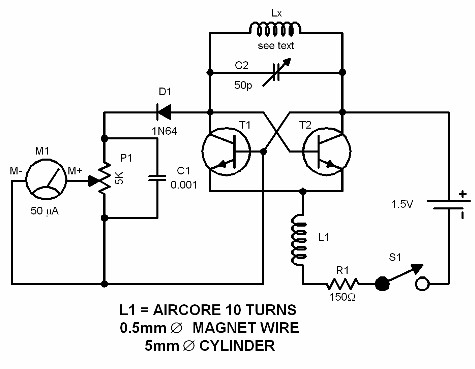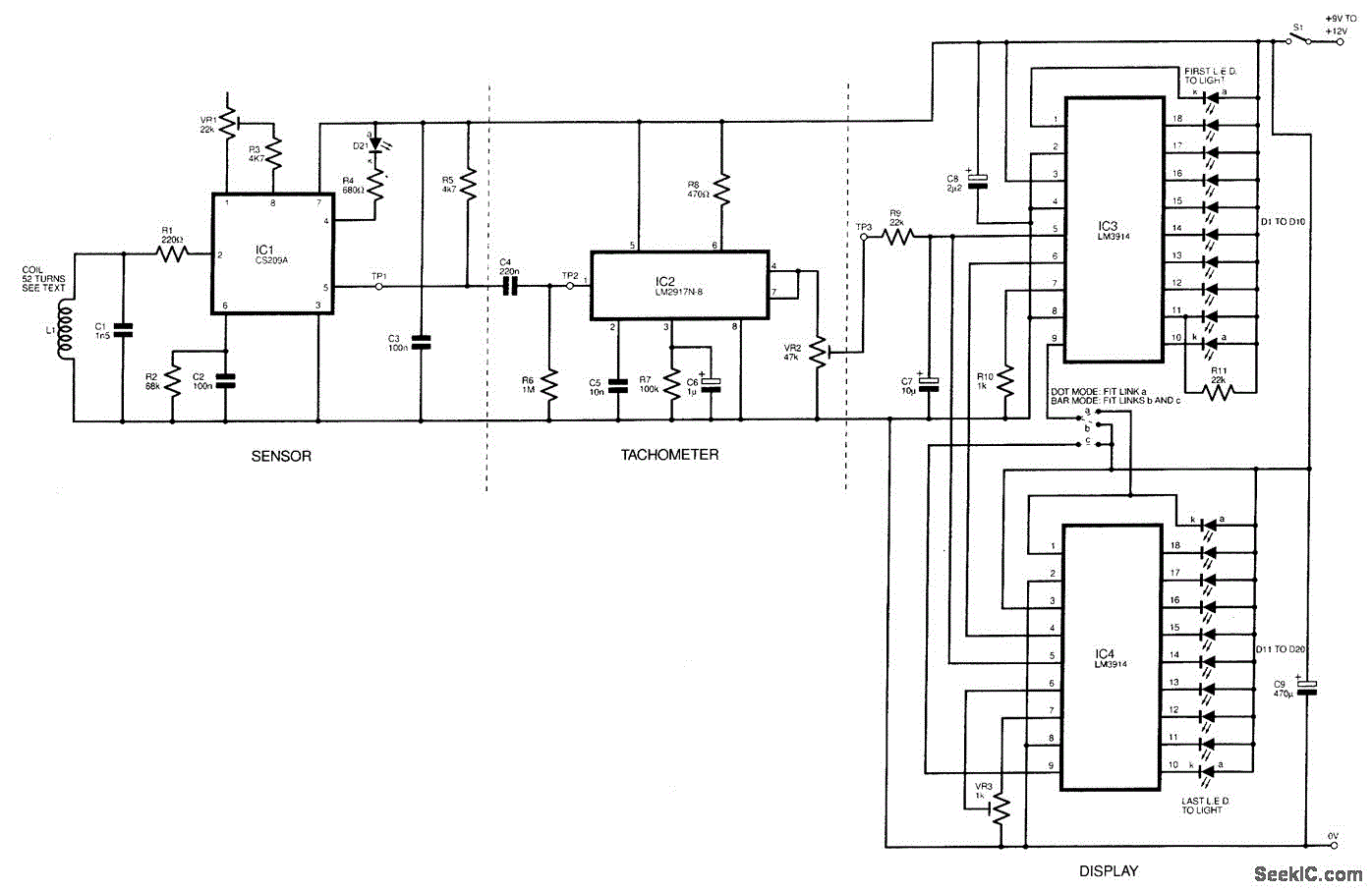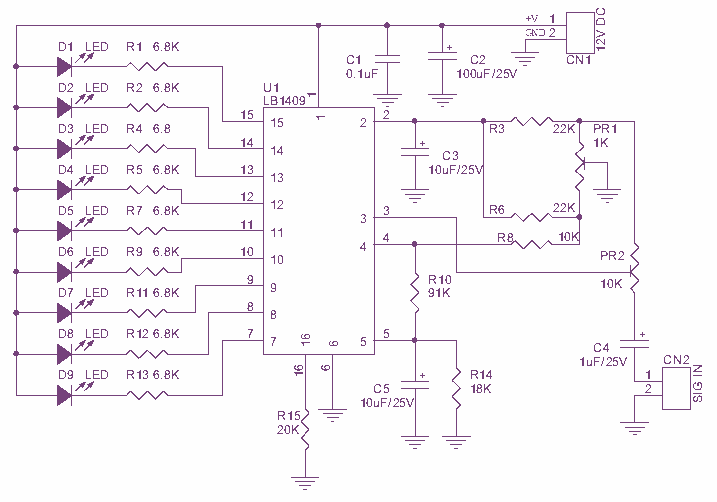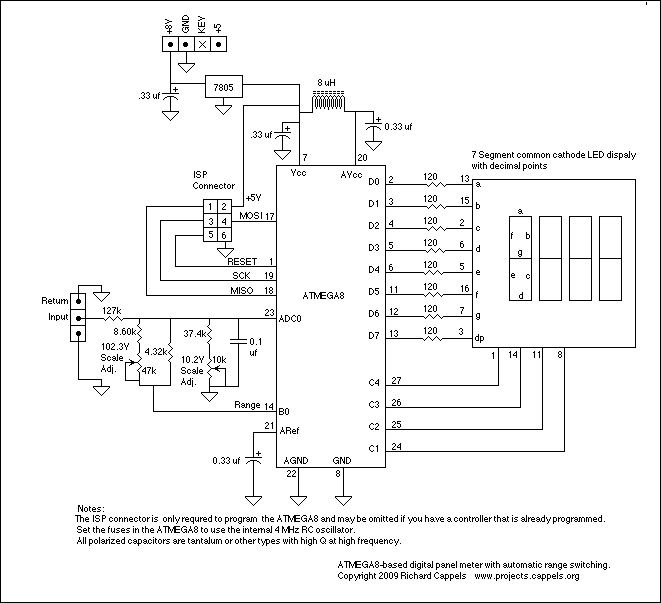
Automatic contrast meter
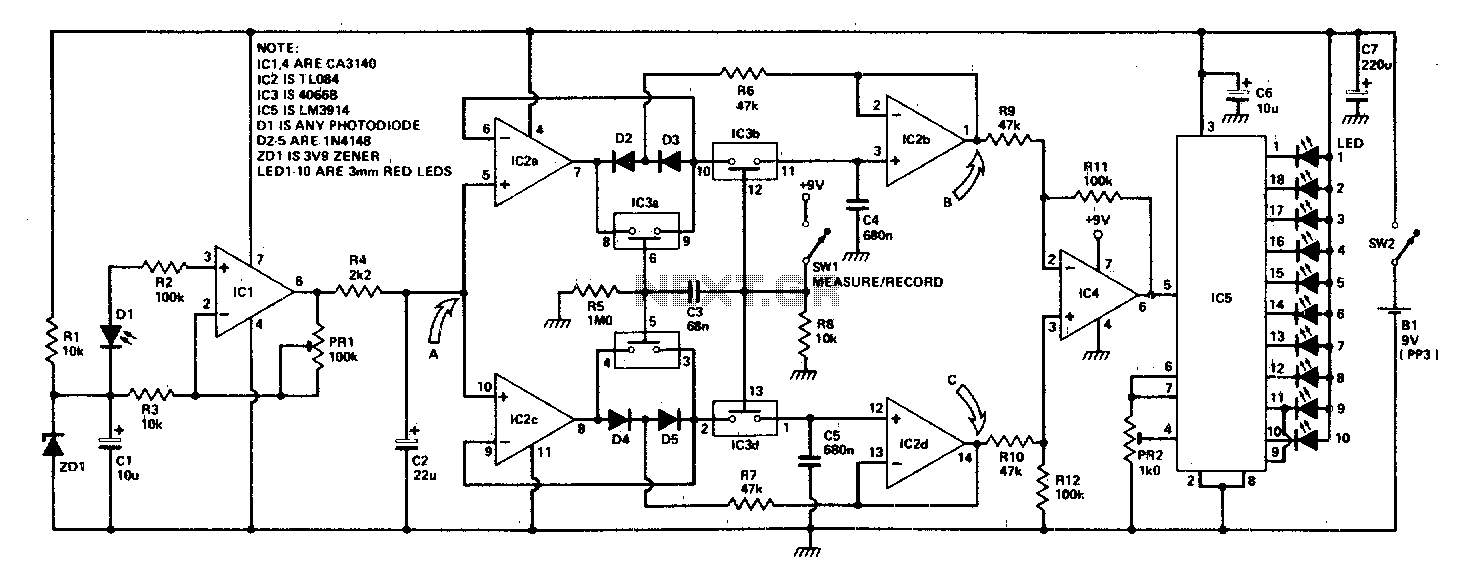
The circuit arrangement includes a photo-amplifier that converts varying light levels in an enlarger into a voltage signal. This signal is processed by two peak detectors: one tracking the peak positive voltage and the other tracking the peak negative voltage. The capacitors that store the voltage peaks in the followers are also components of sample and hold circuits, which are activated to hold the values after measurement. The outputs of these circuits indicate the maximum and minimum light intensity levels. Subsequently, a differential amplifier calculates the ratio of these values, and the result is displayed on an LED bargraph meter.
The described circuit employs a photo-amplifier, which is essential for transforming the light intensity variations from an enlarger into a corresponding voltage signal. This voltage is then directed to two peak detectors, each designed to track specific voltage extremes: one for the highest (positive) peak and the other for the lowest (negative) peak. The use of capacitors in conjunction with these peak detectors serves a dual purpose. Not only do they store the detected voltage peaks, but they also contribute to the functionality of sample and hold circuits, which are crucial for capturing and maintaining the peak values during the measurement phase.
Upon completion of the measurement, the sample and hold circuits are activated to retain the stored voltages. The outputs from these circuits provide the maximum and minimum values of the light intensity, which are essential for further processing. The differential amplifier then takes these two outputs and computes their ratio, thereby providing a relative measure of the light intensity variations. This computed ratio is crucial for applications where precise light intensity control is required.
Finally, the result of the differential amplifier's computation is presented visually through an LED bargraph meter. This display method allows for immediate and intuitive interpretation of the light intensity levels, making it a practical solution for users who need to monitor light conditions in real-time. Overall, this circuit arrangement effectively integrates light sensing, voltage processing, and user-friendly output visualization, making it suitable for various applications in photography and optical measurements.The circuit arrangement consists of a photo-amplifier which feeds a voltage derived from varying light levels in an enlarger to a pair of peak detectors. One follows the peak positive voltage and the other the peak negative voltage. The capacitors used for storing the voltage peaks in the followers also form part of sample and hold circuits which are then switched to hold after the measurement.
Their outputs represent the maximum and minimum values of light intensity A differential amplifier then computes the ratio of these values, and the result is displayed on an LED bargraph meter. 🔗 External reference
The described circuit employs a photo-amplifier, which is essential for transforming the light intensity variations from an enlarger into a corresponding voltage signal. This voltage is then directed to two peak detectors, each designed to track specific voltage extremes: one for the highest (positive) peak and the other for the lowest (negative) peak. The use of capacitors in conjunction with these peak detectors serves a dual purpose. Not only do they store the detected voltage peaks, but they also contribute to the functionality of sample and hold circuits, which are crucial for capturing and maintaining the peak values during the measurement phase.
Upon completion of the measurement, the sample and hold circuits are activated to retain the stored voltages. The outputs from these circuits provide the maximum and minimum values of the light intensity, which are essential for further processing. The differential amplifier then takes these two outputs and computes their ratio, thereby providing a relative measure of the light intensity variations. This computed ratio is crucial for applications where precise light intensity control is required.
Finally, the result of the differential amplifier's computation is presented visually through an LED bargraph meter. This display method allows for immediate and intuitive interpretation of the light intensity levels, making it a practical solution for users who need to monitor light conditions in real-time. Overall, this circuit arrangement effectively integrates light sensing, voltage processing, and user-friendly output visualization, making it suitable for various applications in photography and optical measurements.The circuit arrangement consists of a photo-amplifier which feeds a voltage derived from varying light levels in an enlarger to a pair of peak detectors. One follows the peak positive voltage and the other the peak negative voltage. The capacitors used for storing the voltage peaks in the followers also form part of sample and hold circuits which are then switched to hold after the measurement.
Their outputs represent the maximum and minimum values of light intensity A differential amplifier then computes the ratio of these values, and the result is displayed on an LED bargraph meter. 🔗 External reference
